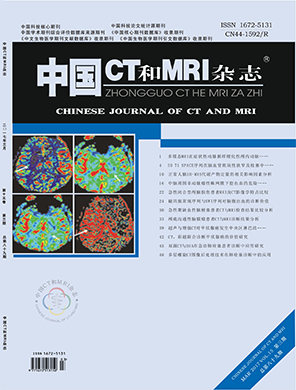Head and Neck Imaging
Clinical and MRI Features of Progressive Muscular Dystrophy in Children
Author:YE Wen-hong, WANG Cang, YU Gen-jian,et al.
affiliation:Department of Radiology, Shenzhen Children's Hospital, Shenzhen 518026, Guangdong Province, China
PDFAbstract
Objective To study the clinical and MRI features of progressive muscular dystrophy(PMD) in children and to access the diagnostic value of MRI in PMD. Methods Retrospective analysis was performed on the clinical data of 33 children with PMD, including clinical manifestations, age of onset,family history, creatase, electromyogram(EMG), pathological changes of muscles and the thigh muscle MRI findings. Results (1) 30(91%) cases were male.2 cases (6%) had a family history.(2) All cases presented symmetrical muscle weakness on the first consultation.25 cases(76%) appeared on bilateral lower extremities. (3) All cases had rised ceretine kinase(CK) levels. (4) EMG showed myogenic damage in all cases.Gastrocnemius muscle biopsy performed on 18 cases confirmed progressive muscular dystrophy.(5) Mainly two kinds of MRI signal features were found as follows: (1)The lesions carried hyperintense both on T1WI and T2WI, equisignal on STIR,showed symmetrical fat replacement for muscles in gluteus maximus and musculus quadriceps femoris of all cases,musculi adductor magnus of 28 cases, semitendinosus muscle of 18 cases, sartorius muscle and gracillis muscle of 16 cases, semitendinousus of 14 cases, musculi adductor magnus of 10 cases. (2)The lesions carried hypointense on T1WI and hyperintense on T2WI and STIR, showed muscle inflammation and edema in some involed muscles in 22 cases,with musculus quadriceps femoris as the most common.11 cases combined with muscular atrophy and 5 cases combined with spatium intermusculare fatty. No abnormality in bilateral femoral bone in all cases. Conclusion PMD showed a predominance of male. Symmetrical weakness of both lower extremities is the main manifestation of PMD. The MRI findings in PMD show characteristics in children, it displays two kinds of abnormal signals which represent fat replacement and inflammatory edema lesion. MRI can provide the degree and extent of the muscle degeneration, it can help to decide the accurate localizations for biopsy.
【Keyword】Progressive Muscular Dystrophy; Magnetic Resonance Imaging; Clinical Manifestation; Children
【Chart number】R722.11;R445.2
【Document Identification Number】A
【DOI】10.3969/j.issn.1672- 5131.2017.03.046
Chinese journal of CT and MRI
th15Volume, th 3 Issue
2017Year03Month

Related articles